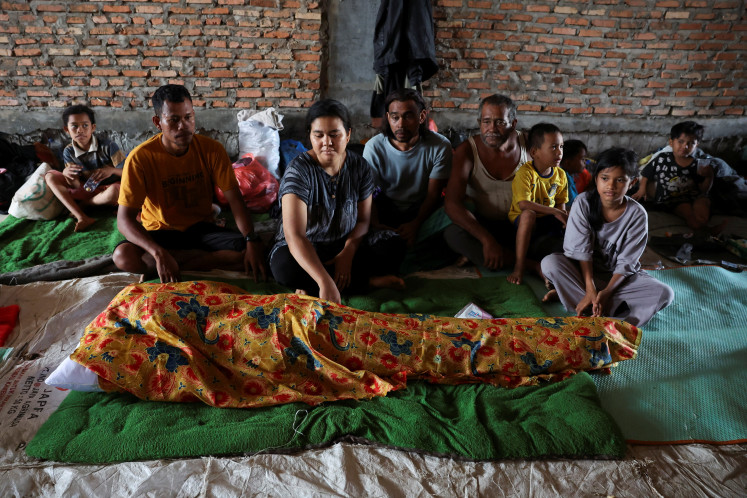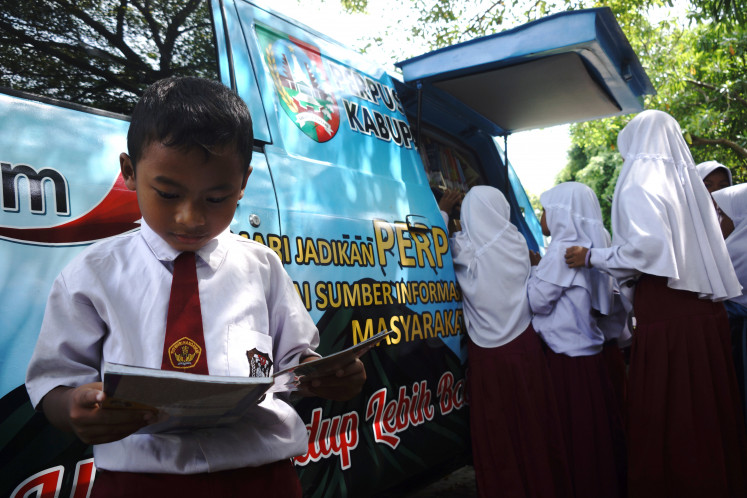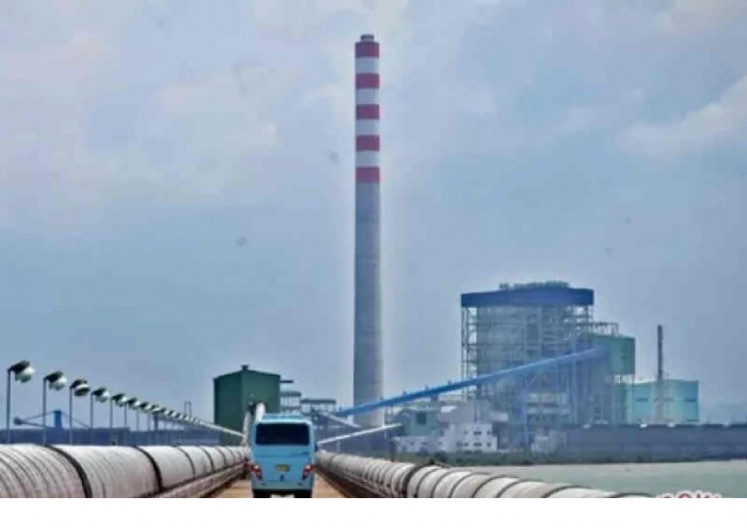Popular Reads
Top Results
Can't find what you're looking for?
View all search resultsPopular Reads
Top Results
Can't find what you're looking for?
View all search resultsSatellite cities struggle with worsening congestion
While congestion in Jakarta is reportedly easing thanks to major measures taken over the past years, traffic in its satellite cities of Depok and Bekasi in West Java and Tangerang in Banten has become increasingly worse
Change text size
Gift Premium Articles
to Anyone
W
hile congestion in Jakarta is reportedly easing thanks to major measures taken over the past years, traffic in its satellite cities of Depok and Bekasi in West Java and Tangerang in Banten has become increasingly worse.
A combination of more vehicles, ongoing road construction projects, poor traffic management, road users’ lawlessness and inadequate roads has brought traffic on many main roads in Greater Jakarta to a halt during rush hour.
In Depok, a 200-square-kilometer city with a population of 2.3 million people and 1.1 million cars and motorcycles, Jl. Margonda Raya is congested throughout most of the day.
Common sights are ojek (motorcycle taxi) drivers parking and customers waiting by shopping centers. Angkot (public minivans) stop wherever they wish. On peak hours, customers of the countless shops, cafes and restaurants park their cars on the busy roadsides, often with the help of illegal parking attendants.
Some parts of Jl. Margonda Raya also lack accessible sidewalks, forcing pedestrians to walk on the edge of the road. A few years ago, the Depok administration widened the protocol road and divided it into eight lanes to reduce congestion, but the traffic woes persisted.
“The traffic at Jl. Margonda Raya is always heavily congested during peak hours,” said Ardhito Triahmadi Gunawan, 24, a landlord and local resident.
He suggested that shelters be built near shopping malls for ojek drivers, roads at residential areas be widened and more modes of public transportation that are integrated throughout Depok and Jakarta be provided.
The Institute of Transportation Studies (INSTRAN) has offered similar suggestions, emphasizing the need to integrate intercity transportation services that would entice middle-class commuters to opt for public transportation and leave their cars at home.
“If the Transportation Agency wants to ease traffic in satellite cities, they should make public transportation more widespread to encourage people to switch from private vehicles. This could work better than the odd-even system or road widening,” INSTRAN’s observer Darmaningtyas told The Jakarta Post.
Depok’s eastern neighbor Bekasi, which has a population of 2.9 million people and has 1.59 million vehicles, is facing similar problems.
In Bekasi, four major construction projects are blamed for the daily gridlock, namely for LRT system, Jakarta-Bandung high-speed railway, elevated toll road and the Bekasi-Cawang-Kampung Melayu (Becakayu) toll road. At nights, oversized trucks only exacerbate the situation.
The Greater Jakarta Transportation Agency (BPTJ) has been administering “pull and push” tactics to solve the chronic traffic. The “pull” part of the method is adding more public transportation in the form of large buses and introducing Jakarta Residences Connexion (JRC) and Jabodetabek Airport Connexion (JAC) buses to more satellite city areas. They are currently in the process of being integrated with the MRT and LRT.
The “push” part is an effort to convince people to switch to public transportation with the odd-even and the electronic road pricing (ERP) policies.
“In addition, the [Greater Jakarta] city administrations will soon introduce revamped buses in each city, such as the Trans Anggrek [in South Tangerang], Trans Patriot [Bekasi] and Trans Tayo [Tangerang],” Bambang told the Post.
The BPTJ is also managing the transfer of cargo from Tanjung Priok Port in North Jakarta to trains and West Java’s Cikarang Bekasi Laut (CBL) inland waterway deliveries. This aims to reduce the number of passing container trucks blamed for congestion on toll roads.
Agency data shows that in 2018, the average daily amount of vehicle journeys in Greater Jakarta area reached 49.5 million, 20 million of which were satellite city residents traveling to and from Jakarta. (bry)










